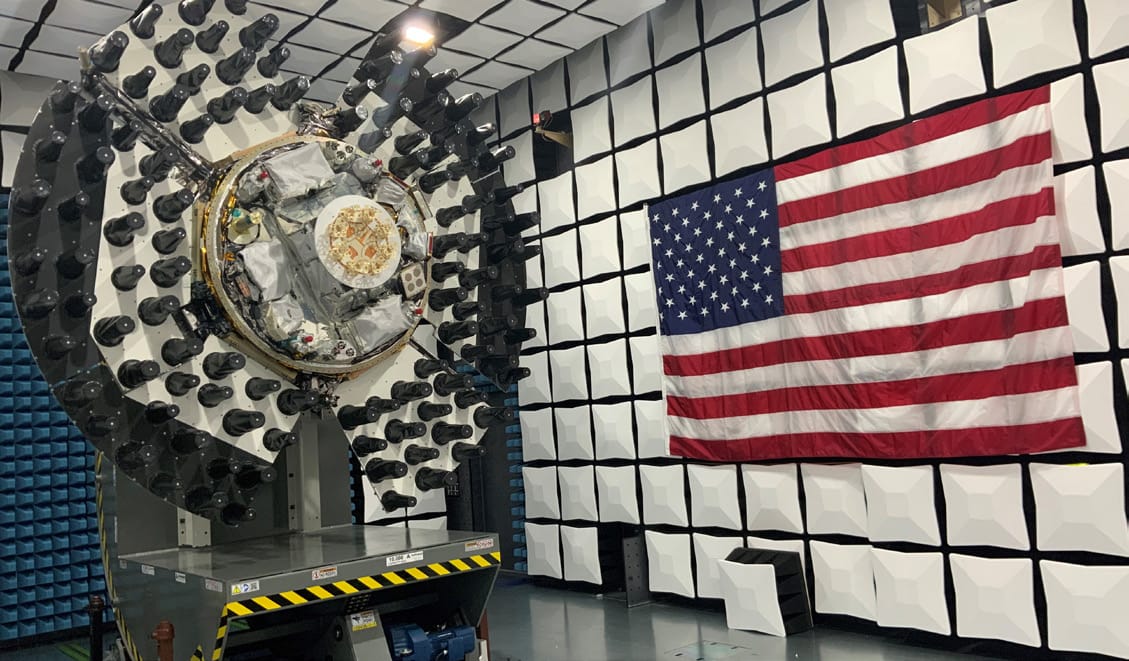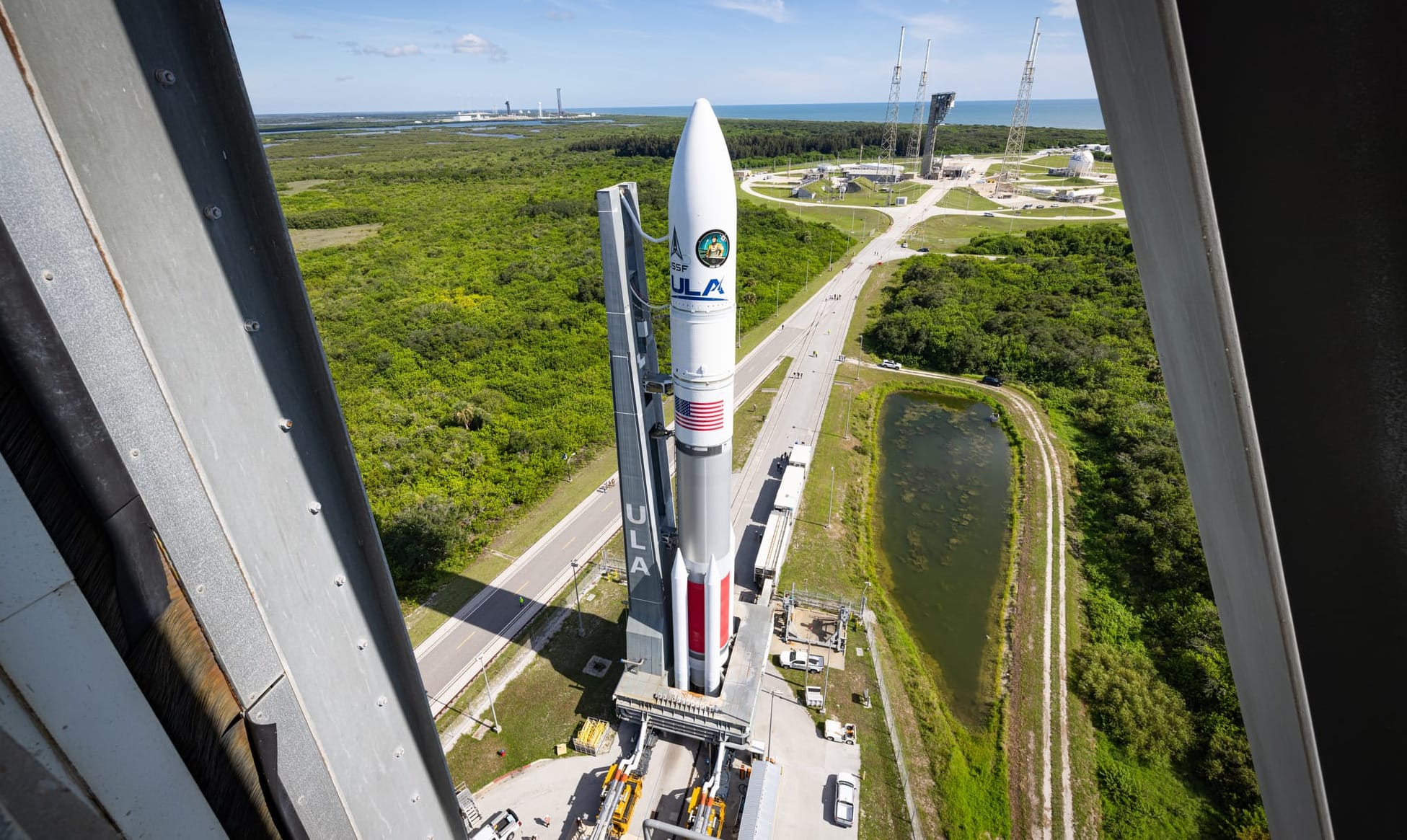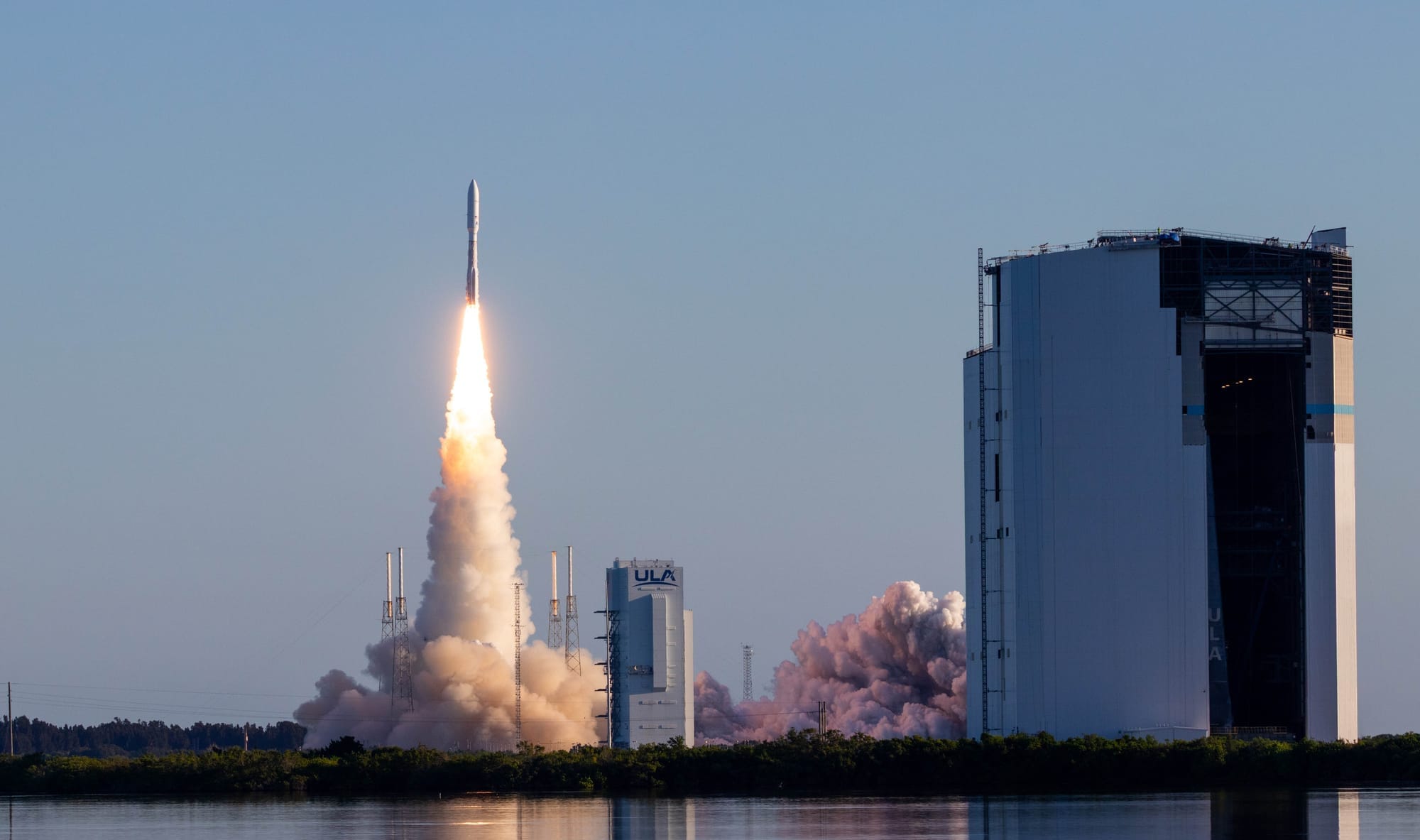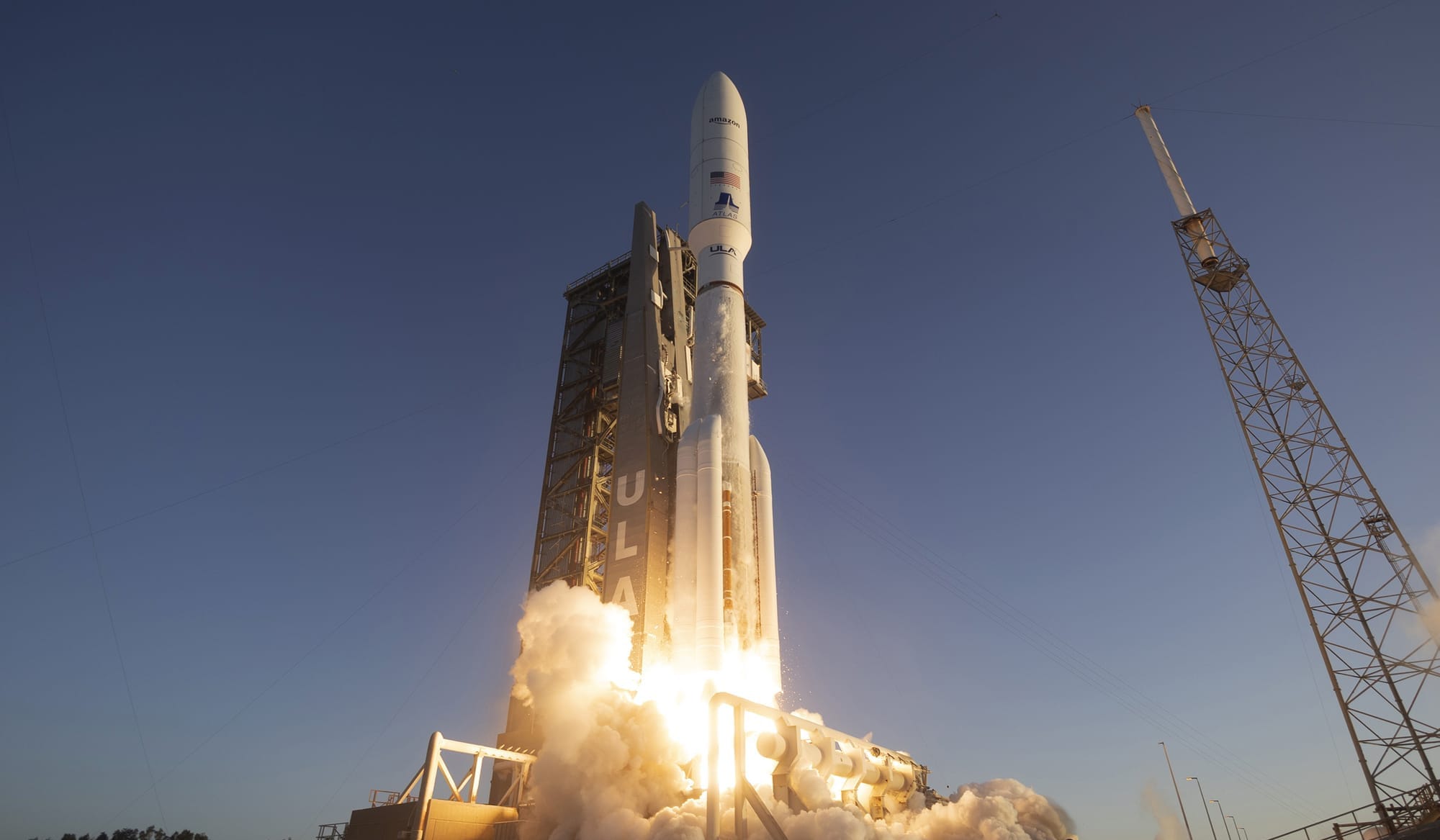Table of Contents
United Launch Alliance's first Vulcan mission for the U.S. government took off from Space Launch Complex 41, at 00:56 am Universal Coordinated Time on August 13th, heading toward geostationary space.
To begin the classified USSF-106 mission, two BE-4 engines cleanly lit before four GEM-63XL solid rocket boosters roared to life to carry the rocket out of Florida. About one minute and forty seconds later the four boosters had burned out, leaving the BE-4 powered first-stage to burn up until five minutes after launch. Following the separation and start-up of the Centuar upper-stage, the mission became secretive with live feeds from the rocket cut, and the live stream ended shortly afterwards.
Despite the plans of the Centaur upper-stage being unknown, it is likely headed directly for geostationary space, performing maneuvers on behalf of its payloads, due to comments from United Launch Alliance's top boss.
LIFTOFF of the United Lunch Alliance Vulcan rocket, continuing ULA's soaring legacy in national security space launch!
— ULA (@ulalaunch) August 13, 2025
Launch info: https://t.co/ZNSovZl0Lu
Photos: https://t.co/QbM4zpZ6I1 pic.twitter.com/vU4hw4F0PI
Liftoff of Vulcan for the USSF-106 mission, via United Launch Alliance on Twitter.
Two missions are believed to have been atop Vulcan for today's launch, the primary one unknown, and the other was Navigation Technology Satellite-3 (NTS-3). NTS-3 is stated to be a positioning, navigation, and timing experiment performing on-orbit demonstrations for its systems. Those experiments will take place for around one year near geostationary space.

With the first successful launch of Vulcan for the U.S. military, the Space Force's Chief of Space Operations, General Chance Saltzman, celebrated the work performed by involved teams, stating:
"Guardians and [United Launch Alliance] just executed the first National Security Space Launch on a Vulcan rocket. Congrats to the entire team!"
Today's Vulcan flight was its first in 2025, following two missions in 2024, as part of United Launch Alliance's gradual increase in flight cadence to replace the Atlas V rocket. As such, Vulcan may perform a few more missions this year for the U.S. government and for Amazon to expand its Kuiper constellation. A first launch of the rocket from California may occur this year as well.
What is Vulcan?
Vulcan, sometimes called Vulcan-Centaur, is United Launch Alliance's in-development two-stage rocket. Vulcan is planned to replace the company's Atlas V and launch vehicle in the coming decade.
The first-stage is powered by two BE-4 engines generating 500 tons of thrust, burning liquid methane and liquid oxygen for about four minutes and fifty-nine seconds. Blue Origin manufactures the BE-4 engines for use with United Launch Alliance.
The second-stage is powered by two RL-10 engines generating 22 tons of thrust, burning liquid hydrogen and liquid oxygen. Aerojet Rocketdyne manufactures the RL-10 engines for use with United Launch Alliance. This stage is also called Centaur V due to the rocket stages' heritage.

Vulcan-Centaur can launch with either zero, two, four, or six GEM-63XL solid rocket motors to augment the rocket's thrust and capabilities. Each booster burns a solid propellant, consisting of Hydroxyl-terminated polybutadiene and Aluminum-Ammonium perchlorate, generating 224 tons of thrust each for a believed one minute and fifty seconds. The solid rocket boosters are manufactured by Northrop Grumman for use with United Launch Alliance.
Two fairing sizes are offered for Vulcan to suit customer needs, both 5.4 meters in diameter. The standard fairing is 15.5 meters long, while the extended long fairing is 21.3 meters long. A 'multi-manifest' version of the 21.3-meter-long fairing is also available for launching multiple spacecraft on a single launch.
In the table below, United Launch Alliance claims Vulcan-Centaur can deliver the following amount of payload in its four potential configurations.
| Vulcan Centaur VC0 | 10,800 kilograms to low Earth orbit, 3,500 kilograms to geosynchronous transfer orbit, or 2,300 kilograms to a trans-lunar injection |
| Vulcan Centaur VC2 | 19,000 kilograms to low Earth orbit, 8,400 kilograms to geosynchronous transfer orbit, or 6,300 kilograms to a trans-lunar injection |
| Vulcan Centaur VC4 | 24,600 kilograms to low Earth orbit, 11,700 kilograms to geosynchronous transfer orbit, or 9,200 kilograms to a trans-lunar injection |
| Vulcan Centaur VC6 | 27,200 kilograms to low Earth orbit, 15,300 kilograms to geosynchronous transfer orbit, or 12,100 kilograms to a trans-lunar injection |
The naming scheme of each Vulcan-Centaur configuration is as follows: V stands for Vulcan, C stands for Centaur, 0/2/4/6 stands for the number of solid rocket motors, and S/L stands for the payload fairing length.






